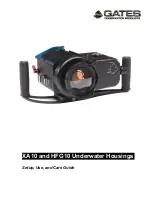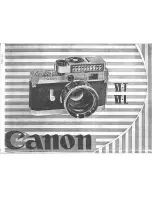
8
INSTALLATION OF BELTING
BELT CONNECTIONS
MAINTAINING PROPER BELT TENSION
Maintaining proper belt tension is vital to unit operation. Enough tension should be
maintained so that drive pulley does not slip under unit fully loaded conditions.
It is perfectly normal for a belt to stretch (in varying climatic conditions) under rated
loading. Therefore, a short belt insert or “belt patch” (or patches) is provided for
future removal when belting has stretched beyond means of conveyor take-up
assembly. For yet additional belt take-up, the belt should be cut and re-laced to
maintain proper belt tension.
To adjust conveyor take-up, adjust position of take-up rod (see illustration above)
as required. Remember to equally adjust both sides to hold take-up pulley square
(to maintain unit squareness for belt tracking). Operating unit with slipping belt will
decrease life of both belting and pulley lagging.
Also, do not operate unit with too much tension on belt. This will
decrease belt life and may harm unit drive and take-up bearings.
Over tensioning belt requires additional horsepower from unit drive
and can cause belt mistracking.
Conveyor belting is cut to proper length, laced and assembled on
conveyor at the factory.
It is test run and inspected before it is shipped to
its final destination.
Before field installation of belting, it is critical to determine the correct
side to be placed down.
One of the most common problems associated
with belt installation involves placing the incorrect side down.
PVC belting is most commonly supplied as “COS” (cover one side).
The opposite side, or side to be placed down, is a friction surface for
decreased friction and improved conveyability. The friction side appears
dull and grainy. ALWAyS place this side down against the conveyor bed.
The cover side is darker and shiny.
If unit is shipped “knocked down,” belt must be re-threaded on unit
during installation.
(See page 13-14 for proper belt paths.)
Join ends of belt as shown with lacing pin.
Loosen threaded take-up
rods (if necessary) at take-up pulley equal amount on both sides and re-
adjust when belt is installed keeping pulley square with conveyor bed. A
belt puller can also be used to join belting.
Belt lacing must be kept in good condition for safe work environment.
MAKE ADJUSTMENTS HERE
NOSE-OVER AND SNUB ROLLER GUARD ADJUSTMENT
Nose-over assemblies may be supplied (optional) when slider/roller belt conveyors are
inclined or declined to ease the transition from inclined to horizontal. A single nose-over
assembly consists of one set of nose-over brackets with carrier roller, one snub roller with
snub roller guard and attachment bracket. A double nose-over assembly includes one
additional set of nose-over brackets and carrier roller.
Beds are cut and nose-over brackets and rollers are installed at the factory. Before unit
is ready for operation, final adjustment of snub roller assembly is required to ensure safe
unit operation. Snub roller guard (cover) should be set (see illustration above) with 1/4”
belt clearance between bottom of belt and top of guard, both sides of guard, during final
installation.
caution: Before unit is ready for operation, snub roller guard (cover) must be
adjusted to ensure safe unit operation.
Содержание 450BOS
Страница 1: ...Installing and Maintaining Your Roach Conveyor...
Страница 17: ...MODEL 725TB END DRIVE END side mount DRIVE center drive drawings 17...
Страница 26: ...MODEL 796RB END DRIVE END side mount DRIVE center drive drawings 26...
Страница 29: ...MODEL 751RB END DRIVE END side mount DRIVE center drive drawings 29...









































